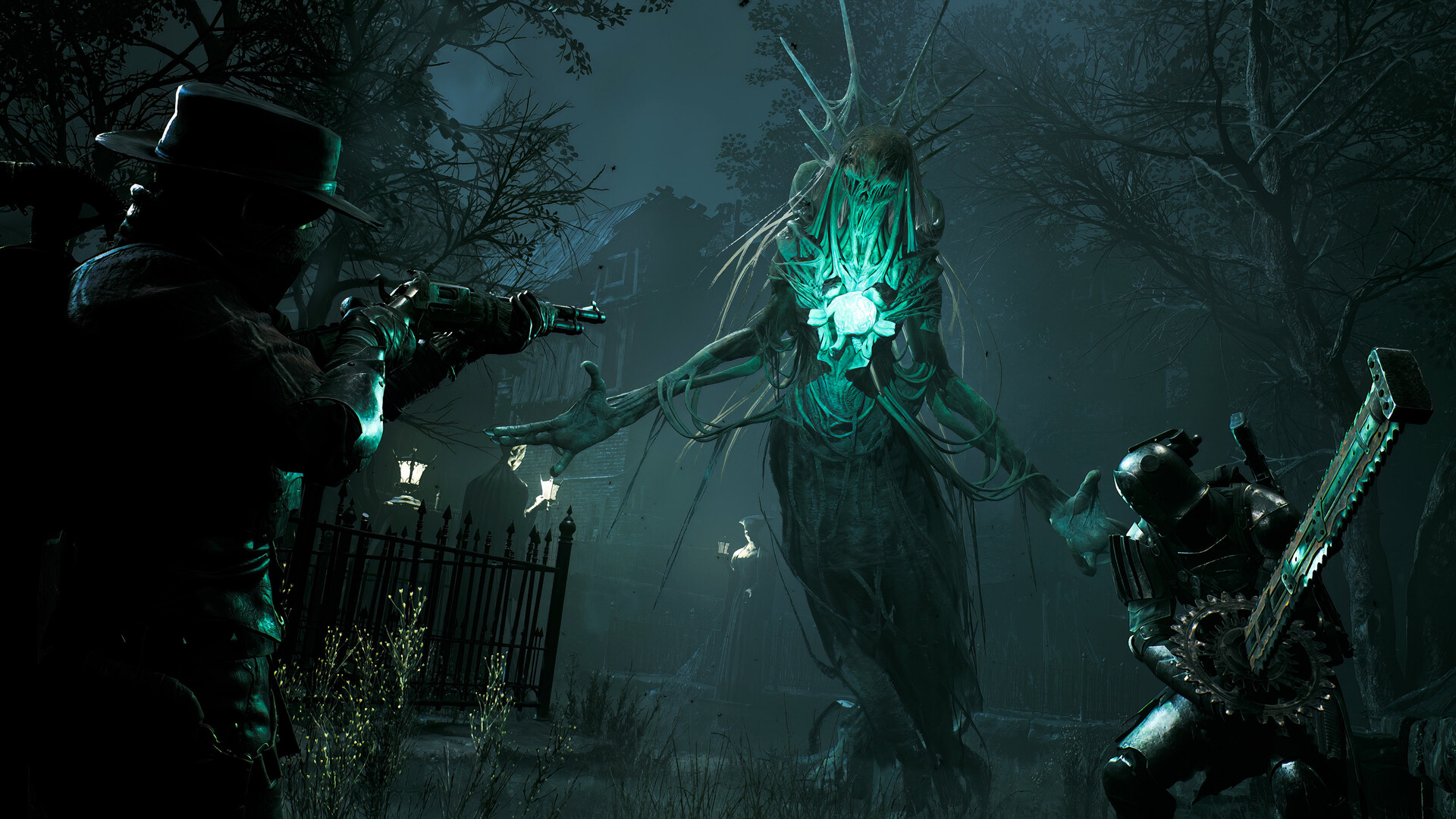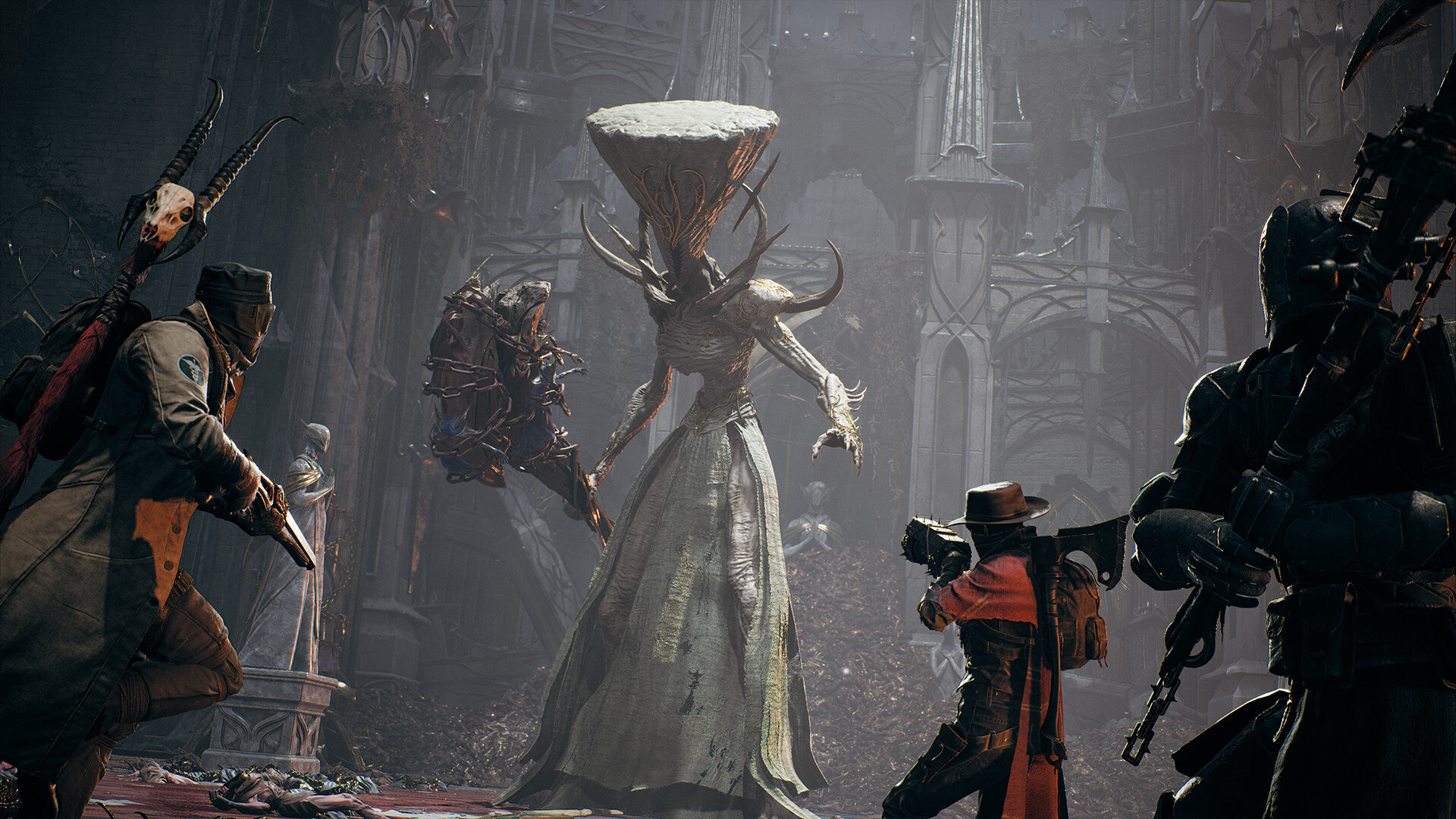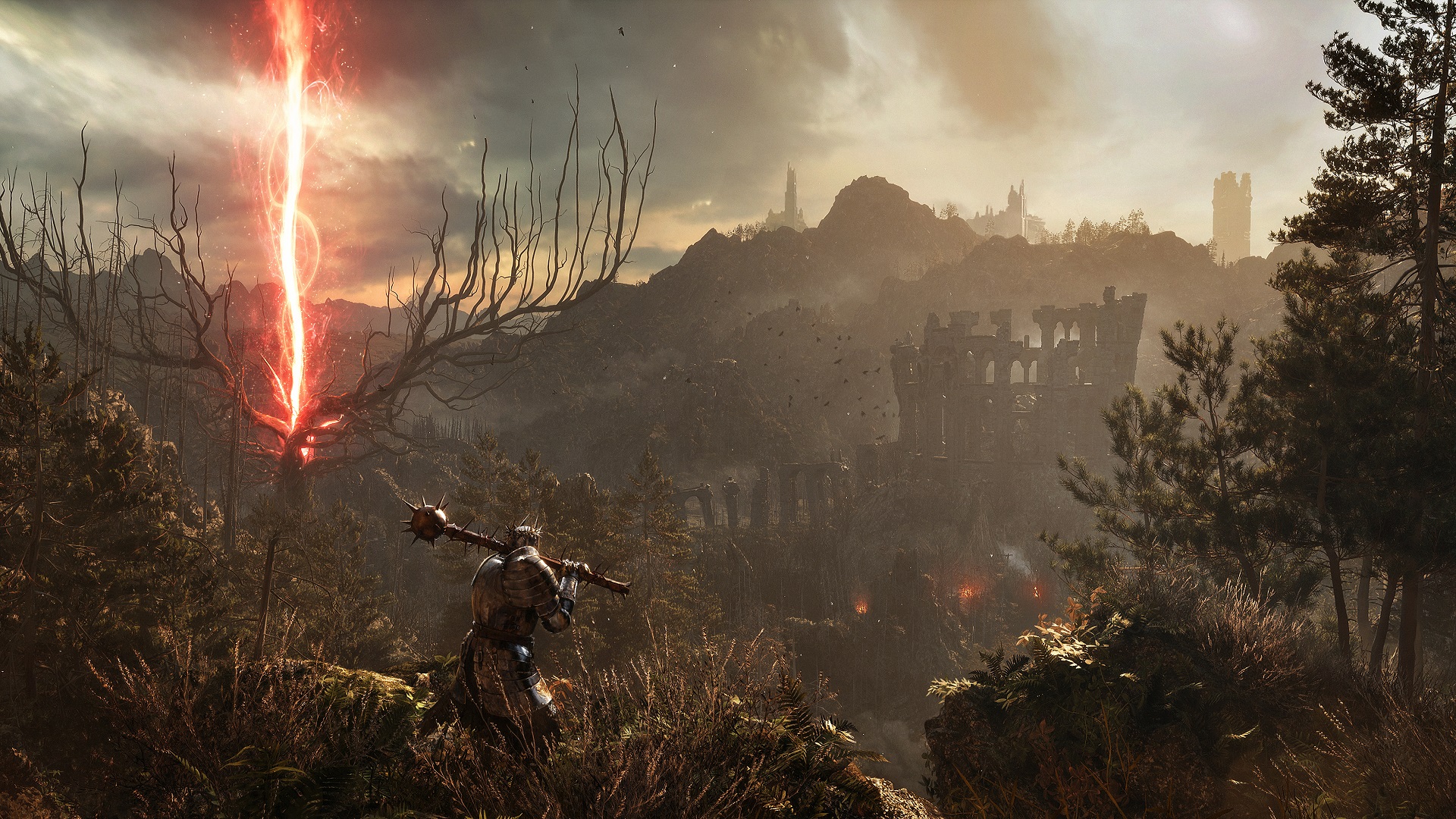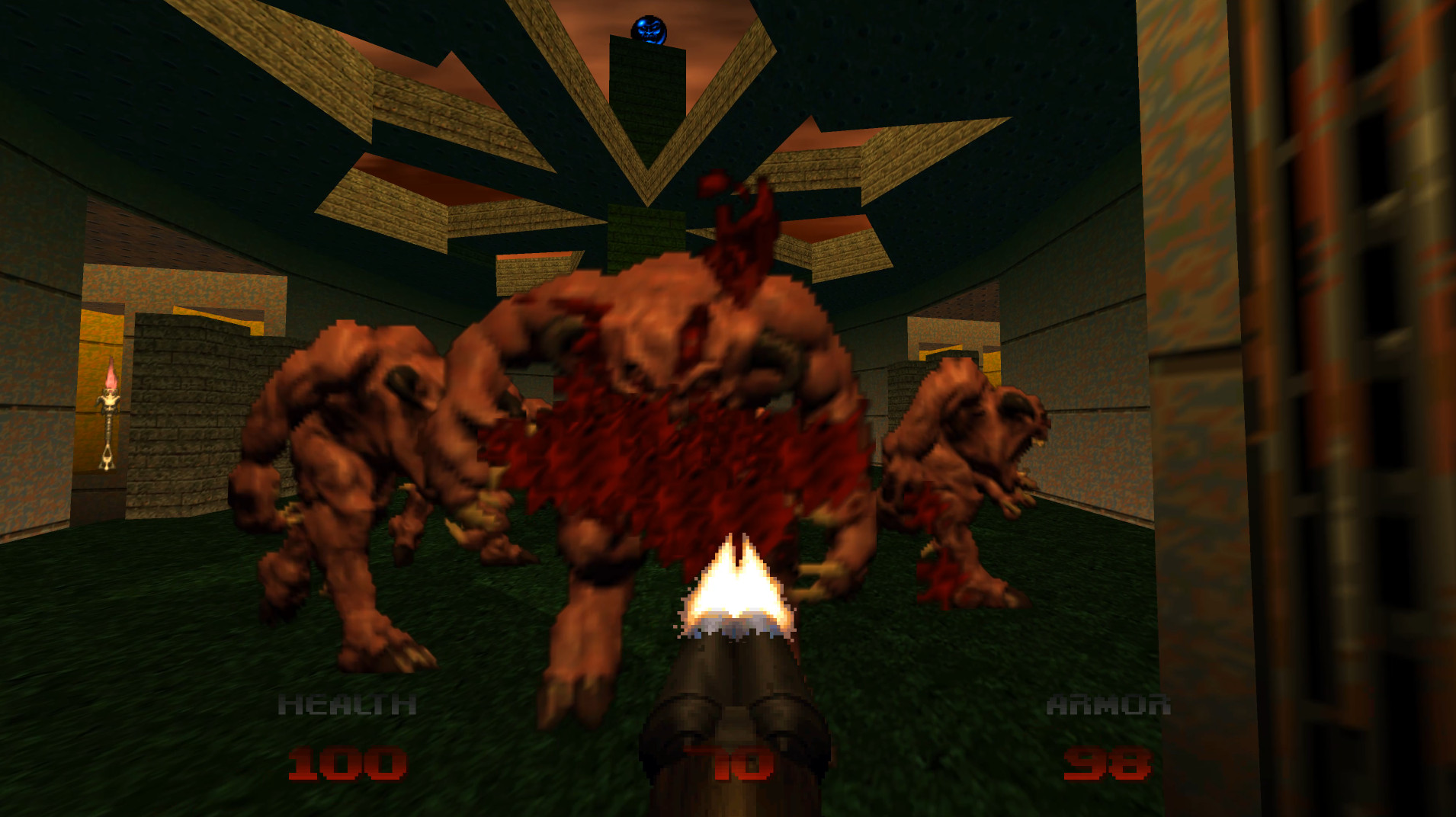
Remnant 2 Review – Soulsborne Shooter Sequel Gits Gud with Guns
Developed by Gunfire Games
Published by Gearbox Publishing
Available on PC, PlayStation 5, and Xbox Series X|S
MSRP: $49.99
2019’s Remnant: From the Ashes put an interesting spin on the Dark Souls formula, taking the basic mechanics of a Soulslike and putting them into a co-op-focused looter shooter. Four years later and the series is back, with a sequel that improves on the original without changing the underlying fundamentals.
Remnant takes place in a multiverse threatened by The Root; a plant-like, all-devouring hive consciousness that spreads from reality to reality on a relentless path of destruction. Having stopped The Root as a nameless hero in the previous game, Remnant 2 tasks your equally title-less wanderer to take up arms and travel across worlds to destroy it once and for all.

After a short intro sequence that starts like something out of The Last of Us, you’re quickly whisked away from post-apocalyptic Earth to one of several wildly different biomes. This is one area where Remnant 2 improves on its predecessor right off the bat, as humanity’s ruined homeworld – which was limited in-game to a single dilapidated American city and its subways – was hands down the most boring locale in From the Ashes. Instead, most of your time will be spent exploring one of three locations. There’s the jungle planet Yaesha, a high-tech wasteland called N’Erud, and Losomn, which might as well be Yharnham from Bloodborne.

With some corruption blighting each of these locations, there’s no shortage of foes to kill, and you’ll be doing so with quite a bit of eye candy to look at as well. Compared to its predecessor’s simpler, almost cel-shaded aesthetic, Remnant 2 has had a significant graphical upgrade, with some particularly nice lighting effects on display. Each world has a unique visual aesthetic as well, and the visual variety stops things from getting stale as you run and gun your way through the campaign.
Sadly, one area Remnant hasn’t improved on much is its storytelling. Like From the Ashes, Remnant 2 takes an annoyingly amateurish approach to narrative, equating worldbuilding with lore dumps from text documents and NPC monologues. Virtually every figure I met would invariably end up spouting about The This and The That, and how The This-ening has caused The That-ening. It all feels a bit disconnected from the core gameplay loop of killing stuff, and I so ended up ignoring most of it.

Killing stuff, not surprisingly, is the beating heart of Remnant 2, backed up by the other element of gathering a metric shit-ton of loot to optimize how you go about killing stuff. In neither of these two areas does Remnant 2 disappoint. The most notable change to the formula is the Archetypes, which are effectively classes with perks that allow you to specialize your play style. None of them are particularly revolutionary, with Archetypes like healer, summoner, and melee specialist, but the twist comes in being able to incorporate two Archetypes into your character at once. In my current playthrough, for example, my character is a Hunter and a Handler, the former granting bonuses to long-range shooting and the latter providing a support dog to revive me and dish out passive buffs.

Besides the Archetypes, there’s an insane amount of customizability in the form of outfits, weapon attachments, bonus-granting rings, and more. You’ll even be able to find different types of recovery items, letting you break the strict confines of Remnant’s Soulslike influence by switching its Estus Flask equivalent for objects that heal in other ways. You’ll want to keep tweaking all this stuff, too, as Remnant comes with a buttload of different enemies that’ll try to kill you in all sorts of cruel and inventive ways. Speaking of which, the developers have also clearly listened to the fanbase and upped their game when it comes to bosses. While From the Ashes tended to throw spongy bosses supported by waves of fodder minions at you, Remnant 2 has a much more varied set of Big Bads. Though I’ve encountered a few lackluster ones (a boss that’s just a woman throwing Molotovs at you, for example) some of them have been pretty unique, like a deadly moving labyrinth made of crushing spheres, and a massive four-armed golem puppeted by a psychic shoggoth-thing.

Perhaps the only major complaint I have with Remnant is a problem it’s failed to address from the first game. While there are some nice sidequests to vary things up at times, the moment-to-moment combat can sometimes slip into samey-ness. A major cause of this, I think, is that while there’s a good enemy variety in general, there tends to only be two or three enemy types in a given location in each world. There’s also none of that intricate enemy placement you get in other Soulslikes, where each encounter feels like a cleverly designed trap you have to pick apart.

Whether this is something the developers could actually address is debatable. Replayability is the name of the game in Remnant, and much of the world is randomly generated. Map layout, sidequests, and even whole locations may be different or missing in any particular playthrough, so one player’s experience of a world will likely be significantly different from another’s. My experience of Yaesha, for example, had me mostly exploring its jungled overworld: I’ve seen other playthroughs that take place primarily in its Root-infested caves and crypts. Having custom-designed encounters may simply not be feasible.
More to the point, Remnant is really best experienced in co-op. For sure, a few of the more narrative-heavy quests are better experienced on your own, and the aforementioned Handler Archetype seems to have been designed mainly to support lone wolves. But enemy numbers scale with the amount of players, and the interplay between each party member’s abilities adds a level of strategy to combat that you just don’t get on your own.

Finally, a word on performance. Though decent overall, I did notice a few minor bugs, like the occasional enemy getting stuck in the scenery, and being forced to repeat the move-through-fog animation when entering a boss arena. Once in a blue moon, the game would also crash when entering a new area. I never lost any progress on any of this, fortunately, as I’d spawn in the new area’s bonfire equivalent, and all items/ stat improvements are saved as soon as you acquire them.

Framerate-wise things were a little patchy, but never game-breakingly so. I was playing Remnant 2 on PC with an NVIDIA GeForce RTX 3060 GPU, an Intel i7-12700H CPU, and 16GB of RAM, above the official recommended specs of an Intel i5-10600k CPU, GeForce RTX 2060, 16GB RAM, with resolution set to 1920 x 1080 and V-sync locked to 60FPS. Still, even playing solo I could never quite get a stable 60 FPS, instead hovering at around 54-60 FPS most times. By comparison, when playing the much more graphically impressive Resident Evil 4 remake, I got a rock-solid 60FPS throughout without any tweaking in the graphics settings, which I hold as something of a gold standard for AA and AAA budget games these days.
In all, Remnant 2 is almost a textbook definition of a game you’ll like if you enjoyed the previous entry. I did, and having already sunk nearly 30 hours into my first playthrough, I’m certain I’ll be adding at least another 30 on top of that. If the prospect of gear optimization, co-op fun, and a Soulslike with guns appeals to you, then Remnant 2’s jaunt through the multiverse may be just the trip you need. Oh, and you can even pet the dog.




